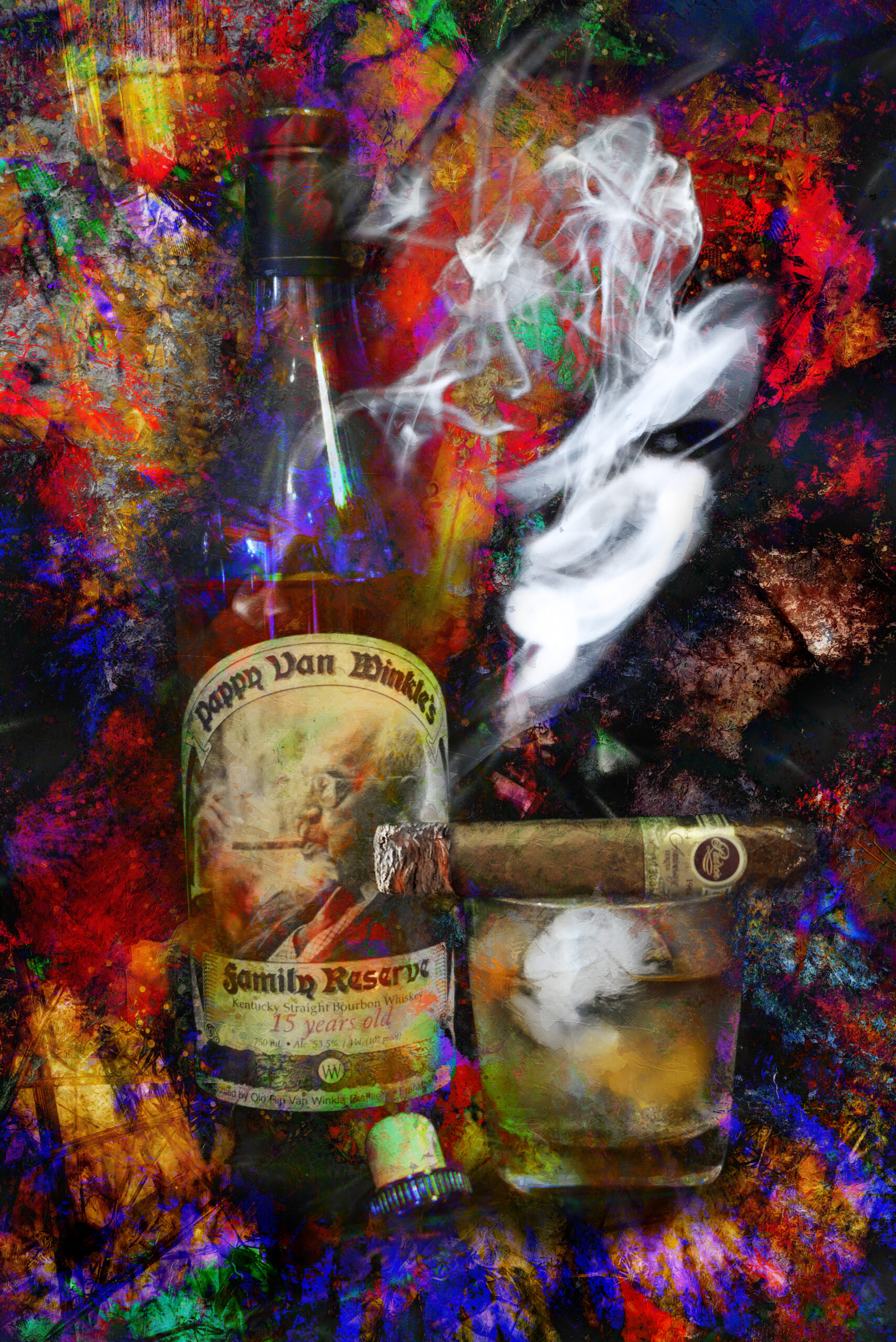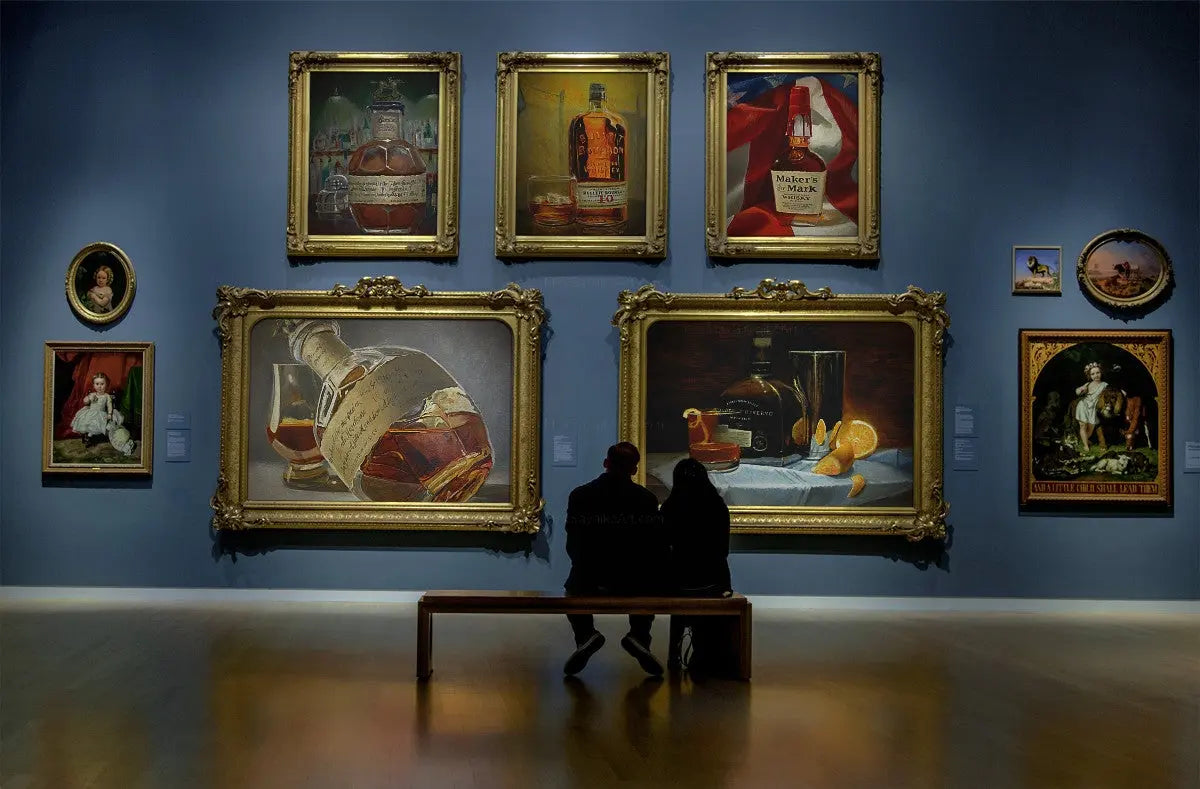Discover the World of Bourbon Art: A Journey Through Culture and Craftsmanship
Discover the World of Bourbon Art: A Journey Through Culture and Craftsmanship
Blog Article
The Significance of Whiskey Art in Celebrating Heritage and Craftsmanship in the Beverage Sector
The detailed partnership between scotch art and the event of heritage and workmanship within the drink industry can not be overemphasized. Through attentively developed bottles and tags, bourbon brand names envelop their historical origins and the artisanal abilities that specify their production methods.
The Historic Roots of Whiskey
At the heart of bourbon's allure lies an abundant tapestry of historic origins that trace back to ancient people. The origins of whiskey can be linked to the distillation practices of the Sumerians and Babylonians around 2000 BCE, where very early kinds of fermented grain drinks began to emerge. It was in the Center Ages that the art of distillation progressed dramatically, especially in Ireland and Scotland, leading to the development of scotch as we recognize it today.
The term "bourbon" itself derives from the Gaelic word "uisce beatha," meaning "water of life." This phrase emphasizes the cultural importance of scotch in Celtic societies, where it was commonly connected with rituals, celebrations, and public bonding. By the 15th century, purification ended up being an acknowledged craft within monastic areas, leading the way for the facility of legal distilleries.
As trade courses broadened, whiskey's popularity grew, transcending local boundaries and capturing the passion of connoisseurs worldwide. Whiskey Art. This historic journey reflects not only the craftsmanship behind scotch production but additionally its integral function in social and social contexts, noting it as a substantial drink throughout history
Artistic Expression in Branding
Whiskey branding stands as an engaging junction of artistry and commerce, where visual identity plays a vital duty fit customer perception. The visual appeals of scotch labels, product packaging, and marketing materials reflect not just the brand's story however additionally its core worths and heritage. Through artistic expression, distilleries communicate a narrative that reverberates with consumers, stimulating feelings and stimulating links.
Using color, typography, and imagery in branding serves to differentiate products in a saturated market. Typical themes might evoke a sense of credibility and craftsmanship, while contemporary designs can signify advancement and forward-thinking. This calculated artistic direction boosts brand name acknowledgment and commitment, permitting customers to build a personal partnership with the whiskey they pick.
Additionally, imaginative expression in branding commonly serves as a party of regional heritage. Distilleries often include neighborhood signs or historic recommendations right into their layouts, creating a local color that welcomes consumers to take part in a wider cultural experience. Inevitably, the virtuosity behind whiskey branding not only boosts visual charm but likewise enhances the total narrative of the brand, fostering a much deeper appreciation for the workmanship and heritage ingrained in each container.
Workmanship in Container Style
The virtuosity obvious in bourbon branding prolongs beyond aesthetic identity to encompass the craftsmanship entailed in bottle layout. Each bottle works as a vessel not simply for the spirit within, but also for the story it outlines its tradition, origin, and quality. The layout procedure requires meticulous attention to detail, as components such as material, shape, and closure add substantially to the overall assumption of the whiskey.
Craftsmanship in container layout includes choosing high-quality glass that can enhance the bourbon's shade and clarity, while also providing a responsive experience for the customer. The silhouette of the bottle need to be both functional and cosmetically read this enticing, often showing the heritage of the brand. Numerous distilleries select special shapes or printed logos that stimulate a feeling of credibility and background.
Moreover, the label style and typography play an essential role in communicating the brand name's narrative. Realism Art. A well-crafted container not just astounds the consumer's eye but likewise strengthens the brand name's dedication to top quality and tradition. This way, the workmanship of container style comes to be a crucial facet of the bourbon experience, combining artistry with an extensive regard for heritage
Social Relevance of Whiskey Art
Celebrating practice and craftsmanship, the social relevance of whiskey art transcends mere looks, linking with the historical and social stories of the regions from which it originates. Each container acts as a canvas, portraying the unique tales, folklore, and traditions that have actually formed regional whiskey-making methods. The detailed styles usually mirror the heritage of the distillers, incorporating symbols and motifs that reverberate with the culture and values of their areas.

Additionally, bourbon art plays Going Here an essential duty in common gatherings and events, acting as a tangible web link between people and their shared experiences. By appreciating the virtuosity in scotch packaging, consumers grow a much deeper understanding and regard for the craft, ultimately enriching their enjoyment of the beverage itself.
Modern Trends in Bourbon Discussion
In recent times, the presentation of bourbon has progressed to reflect contemporary preferences and patterns while still recognizing conventional workmanship - Limited Edition. Distilleries are increasingly focusing on aesthetic components that improve the total drinking experience, bridging the space in between heritage and modernity
Cutting-edge bottle layouts have arised, usually including sustainable products and creative tags that inform compelling stories. Numerous brand names now work together with neighborhood musicians, instilling their items with one-of-a-kind aesthetic expressions that resonate with consumers. In addition, limited-edition launches are often packaged in collectible containers, adding worth and appeal for connoisseurs.

Conclusion
In conclusion, whiskey art offers as a crucial channel for sharing the heritage and workmanship integral in the beverage sector. Through complex branding, innovative container styles, and culturally considerable artistic aspects, whiskey brands effectively honor their practices and connect with consumers.


Craftsmanship in bottle style entails choosing top quality glass that can boost the scotch's color and clearness, while also giving a tactile experience for the customer. In this way, the craftsmanship of container design becomes a vital element of the whiskey experience, merging artistry with an extensive regard for heritage.
In conclusion, bourbon art serves as a crucial avenue for sharing the heritage and workmanship fundamental in the beverage sector.
Report this page